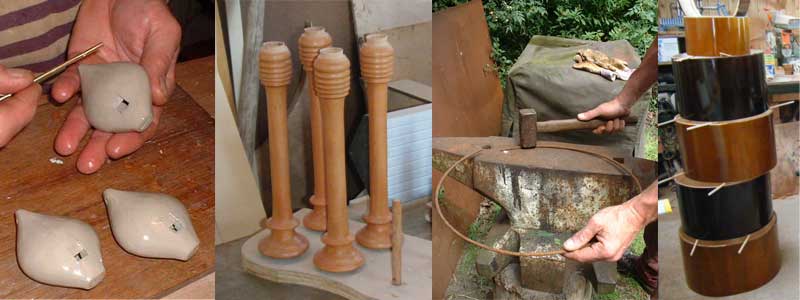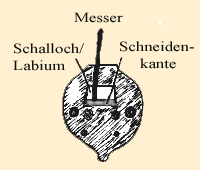Tonflötenbau

Die Entstehung der Tonflöte
Wir benutzen ausschließlich feine weisse Keramikmasse zum Fertigen unserer Flöten, da diese sich im Laufe der Jahre am besten bewährt hat und besonders fein ausgearbeitet werden kann.

...und die beiden Hälften zu zwei Schalen ausgeformt, die dann zusammengesetzt und die Ränder miteinander verarbeitet, bereits die endgültige Form der Flöte bilden.

Mit einem fein und dünn zurecht gefeilten Hölzchen wird der Windkanal in die inzwischen lederhart gewordene Form einer Flöte gestoßen. Der auf dem Hölzchen liegende Ton wird bis zum Anfang des gleich entstehenden Schallochs (Labium) weggeschnitten. (siehe auch Fotos unten)


 English
English
 French
French
 German
German












